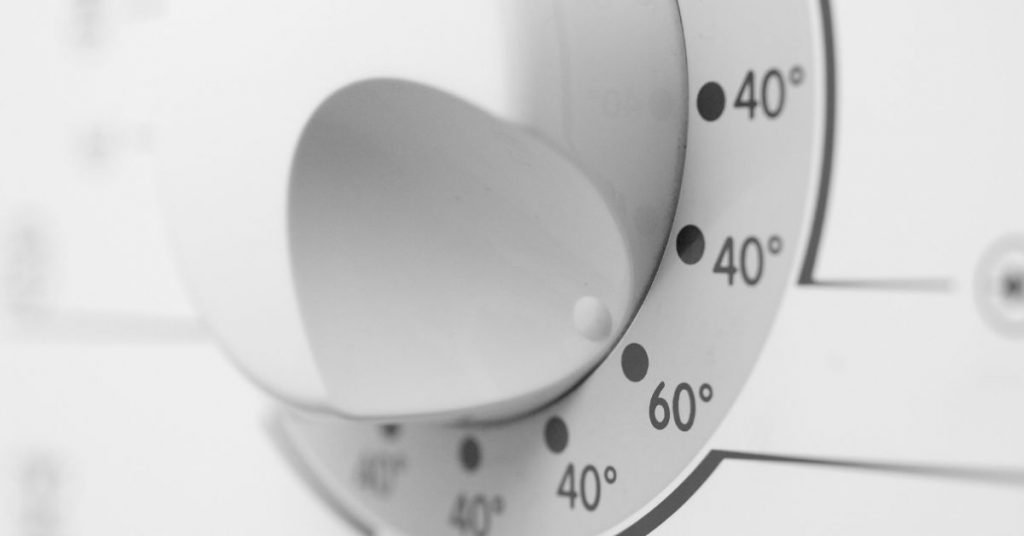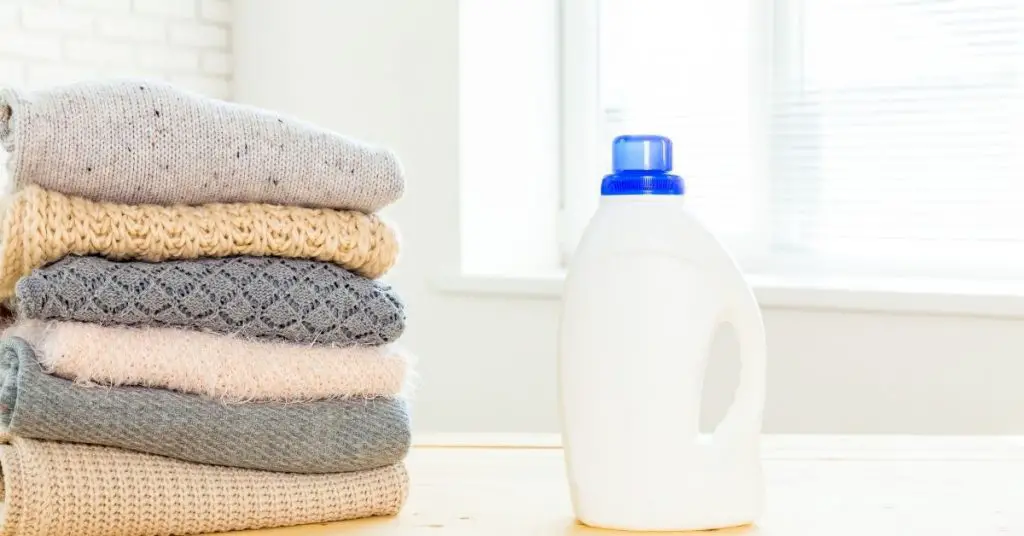What Temperature to Wash Clothes to Kill Bacteria in Washing Machine
We know that washing machines clean dirt and grease from our clothes, but what about the invisible bacteria?
Washing our clothes, towels and bedsheets with the best smelling laundry detergent and fabric conditioners definitely brightens and cleans.
However, especially in today’s times, it might not be enough.
Lovely-smelling fabric doesn’t necessarily mean that it’s as clean as we think.
Unfortunately, there can be a lot of potentially harmful microbes living deep within the fibres, even after they’ve been washed.
To properly kill the germs and bacteria hidden in our fabric, the best option is to use good products that contain bleach and use a hot cycle.
Economically and ecologically, repeatedly using the hot wash can be taxing on our bank balance and the environment.
In this post we’ll answer the following questions:
- What Temperature Kills Bacteria in Washing Machine?
- Can Bacteria Survive in the Washing Machine?
- Is There a Laundry Detergent That Kills Bacteria?
- Does the Dryer Kill Bacteria?
What Temperature Kills Bacteria in a Washing Machine
As long as the items can be washed at high temperatures (above 40 degrees), then 60 is the optimum temperature for cleaning the most bacteria from clothes and fabrics.
However, washing at 60 alone won’t be enough to remove all bacteria and viruses, with certain strains being resistant to washing at such temperatures.
The hot wash cycle should be used alongside quality laundry products, ideally containing enzymes and or bleach.
If you’re looking for the difference between washing at 60 vs 40 degrees, based on the NHS advice shown below, using a bleach-based laundry detergent at 40C is just as effective as washing at 60.
Washing at 40 will reduce your bills and the environmental impact of the wash, and even prolong the life of your clothes by putting less strain on them during the wash cycle.
In ordinary times, which these most definitely aren’t, we’d usually steer away from suggesting that clothes should be washed at 60.

However due to the unusual circumstances, we think taking extra precautions from viruses is probably a good idea, and we do recommend washing particularly soiled clothing at 60 degrees.
The NHS suggests the following tips for preventing germs from spreading and killing germs in laundry:
- Wash your hands after handling dirty laundry
- All underwear, towels and household linen should be washed at 60C (140F) or at 40C (104F) with a bleach-based laundry product to prevent germs from spreading
- Don’t leave laundry in the washing machine – any remaining germs can multiply rapidly
So to summarise, wash underwear, towels and bedding at 60C and all other clothes and linens at 40C, with a bleach-based laundry product for best results at all temperatures.
If you’re wondering if washing clothes at a higher temperature can shrink clothes, have a read of our article: Does Washing At 60°C Shrink Clothes?
Can Bacteria Survive in the Washing Machine?
Not only can bacteria survive in the washing machine, but without proper laundering bacteria and viruses can actually multiply in the wash.
Bacteria and viruses multiplying is particularly dangerous when laundry is left for a while after the cycle has finished.
The spread and multiplication of bacteria in the washing machine can be lessened by regular deep-cleaning of the appliance.
In front-loading washing machines, gravity causes soap, gunk and hair to build up inside the rubber seal of the door.
Cleaning out this seal can remove unwanted bacteria and reduce the damp smell often found in washing machines.
You can read more about how to clean a washing machine in our Clean and Tidy Living articles How To Clean A Washing Machine With White Vinegar and our detailed guide: cleaning a front-loading washing machine.
Is There a Laundry Detergent That Kills Bacteria?
According to Which, “Normal washing will kill bacteria and a bleach-based detergent will do even more.”
Some detergent brands, like Dettol and Lysol, have released products marketed as ‘anti-bacterial detergent’.
Research shows that these products have no real advantage over a normal bleach-based laundry detergent.
So if you’re looking for a laundry detergent that kills bacteria, then just make sure bleach or hydrogen peroxide is listed in the ingredients or somewhere on the packaging.
| When washing colours remember to look for a colour-safe bleach like this Vanish Gold Oxi Advance Powder. |
| For washing whites, we recommend the Vanish Gold Oxi Action Powder in Crystal White. |

Other Clean and Tidy Living Laundry Detergent Recommendations:
Does the Dryer Kill Bacteria?
Like with washing machines, there’s no way for a tumble dryer to rid laundry of all traces of bacteria, germs and viruses.
However, running the dryer on a hot cycle at a minimum of 60 degrees, for around 30 minutes, will kill the majority of the germs leftover from the washing machine.
There will be some strains of virus and bacteria that will be resistant to the hot temperatures.
A bleach-based detergent can be used in the washing process to help reduce the numbers of dangerous microbes left on our laundry.
What Temperature Kills Bacteria in a Washing Machine – Final Thoughts
Our key takeaways from this post are that if you’re looking to kill as many bacteria, germs and viruses as possible in your laundry cycle, then consider the following steps:
- Use any bleach-based laundry detergent – ‘anti-bacterial’ detergents have no added advantage
- Wash the dirtiest items, bedding, towels and underwear, at 60 and the rest at 40
- Removing items as soon as the wash cycle has finished prevents bacteria from multiplying
- Tumble drying at hot temperatures for half an hour can help kill more germs and bacteria than washing alone
- Regularly cleaning the washing machine and tumble dryer will reduce the number of bacteria and germs that can get into your laundry during the wash and dry cycles
We hope this post has been informative in explaining what temperature kills bacteria in a washing machine.
In these scary times, it’s nice to know that there are added steps we can take to keep our families safe from viruses in and outside the home.
For more laundry advice and cleaning tips, check out some of our related Clean and Tidy Living articles below.
Related Laundering and Cleaning Articles:
- The Best Top Tips For How To Stop Clothes Smelling Damp
- How Often Should You Change Your Sheets And Why
- What Is Cotton Dry And When Should You Use It?
- How To Get Mud Out Of Clothes
- How To Clean A Washing Machine With White Vinegar
- How To Clean A Front Loading Washing Machine With Vinegar And Baking Soda
- Does Washing At 60°C Shrink Clothes?
- The Ultimate Guide To The Difference Between Bio And Non-Bio
- Best Smelling Laundry Detergent UK: Ultimate Buyers Guide
- The Best Natural Washing Powder In The UK

